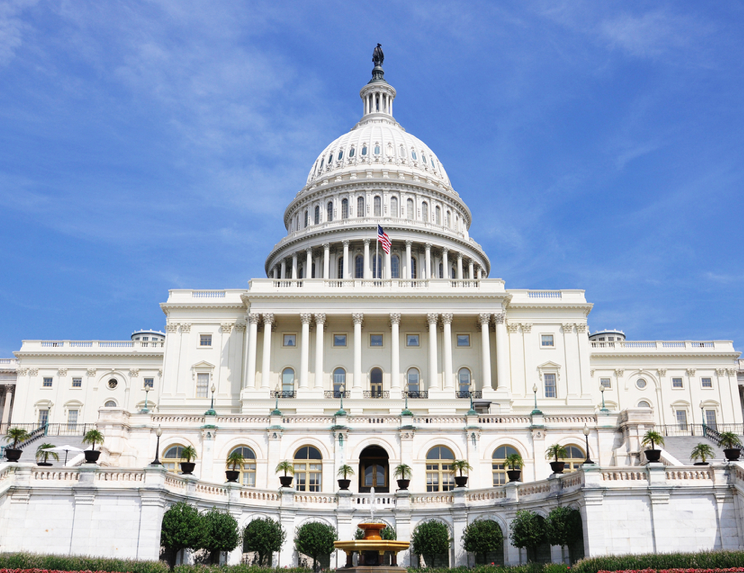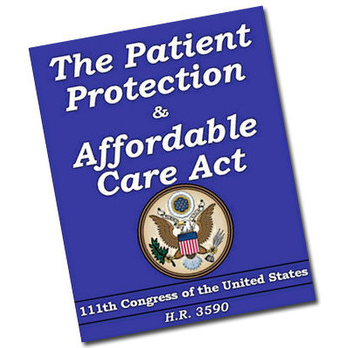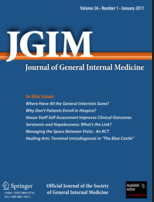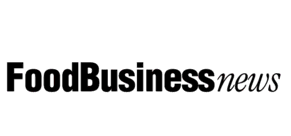Healthcare PR
Seven ways to outsmart your competition with content marketing
by Joshua Schneck

 | September 29, 2015
| September 29, 2015
Great article in Forbes on seven ways to outsmart your competition with content marketing. Brian Sutter offers a good checklist of ways to know what your competition is doing with its content marketing, and how effective it is. With this knowledge, you can fine tune your own content marketing to stay ahead of the competition. As Sutter says:
“Most of what works or doesn’t work in content marketing is public. Because of this, it’s easy to take all of your competitors’ successes and failures and leverage them for yourself.”
Sutter shows you the tools you need to learn the following about your competition’s content marketing:
• What they publish (both on their blog and anywhere else)
• How well what they publish does on social media
• Which keywords they rank for
• What they’re doing with pay-per-click advertising, which terms they bid on, what they pay for it, and their ad copy
• Whether their social media following is growing or shrinking, and how engaged they are
• How their site performs
• Where their links are and when they got them.
Of course, your own content marketing should be well thought out, focused on target audiences, convey information that helps differentiate and position your product and company and people, and be a genuine and useful source of information to your clients and prospects. If it does all that, your blog will be well read, and Google with reward you with better placement in its search results.
Promoting vaccines
by Joshua Schneck

 | September 17, 2015
| September 17, 2015
Attention all healthcare PR and marketing people: Let’s join together in promoting vaccines and the truth about vaccines. They save lives. Forbes contributor Tara Healle states it extremely well with “Ben Carson Doesn’t Get It: All Our Vaccines Prevent Death.”
What Healle finds especially disheartening is that two physicians who know better, or should know better, chose to pander during last night’s Republican presidential debate on the subject of vaccines. Dr. Ben Carson, a neurosurgeon, made the claim that while some vaccines are very important and save lives, some do not fit into this category. Carson suggested there should be some discretion in the use of these vaccines.
As Haelle points out, all of the vaccines on the CDC list for childhood vaccinations have the demonstrated potential to prevent conditions that can lead to death.
Another physician running for president, added his view. Rand Paul, an ophthamologist, said he’s all in favor of vaccines, but also in favor of freedom. Healle’s response:
“I’m for freedom too, Rand Paul. I’m for freedom from disease. I’m in favor of ensuring that my child and those in my community don’t get sick from measles and die because fear has led others in the community not to vaccinate their children.”
As a Minneapolis healthcare PR and marketing firm, we want to help get the word out. We commit to making vaccines a regular focus of this blog and will work in other ways to combat the unscientific disinformation out there about the effectiveness and safety of vaccines.
One of my good friends, a physician in Los Angeles, contracted polio as a child in the 1950’s. My friend has surmounted many difficulties, and is an inspiration to many, including myself. He is offended by untruths about vaccines. If only the polio vaccine had been around when he was a child!
Let’s not let the science doubters, including physicians running for president, carry this debate. People of reason need to speak out, loudly and often.
No competition in Medicare Advantage plans?
by Joshua Schneck

 | September 14, 2015
| September 14, 2015
Is there no competition in Medicare Advantage plans? Not according to a new study by The Commonwealth Fund. As a Minneapolis healthcare PR agency, we like competition. In the case of these privatized Medicare plans, it has the potential to drive prices down and offer more choice and better service and quality to health plan members. And, of course, as a healthcare PR and marketing firm, competition provides more opportunities for us to help get out the message.
From the abstract:
“Competition among private Medicare Advantage (MA) plans is seen by some as leading to lower premiums and expanded benefits. But how much competition exists in MA markets? Using a standard measure of market competition, our analysis finds that 97 percent of markets in U.S. counties are highly concentrated and therefore lacking in significant MA plan competition. Competition is considerably lower in rural counties than in urban ones. Even among the 100 counties with the greatest numbers of Medicare beneficiaries, 81 percent do not have competitive MA markets. Market power is concentrated among three nationwide insurance organizations in nearly two-thirds of those 100 counties.”
Is the public served by this situation? Yes, says Clare Krusing, a spokeswoman for America’s Health Insurance Plans, a Washington trade association. Quoted in The New York Times, Krusing said, “Seniors are overwhelmingly satisfied with Medicare Advantage because of the wide range of coverage options available and the overall value these plans provide. This market remains competitive, particularly with Medicare Advantage plans demonstrating improved care delivery for beneficiaries compared to traditional Medicare.”
For more on The Commonwealth Fund study, go here.
What Alice Waters can teach healthcare PR and marketing
by Joshua Schneck

 | September 10, 2015
| September 10, 2015
Reading an old profile in The New Yorker made me think about what Alice Waters can teach healthcare PR and marketing. Alice Waters, who today won the National Humanities Medal from President Obama, opened Chez Panisse in Berkeley, California in 1971, with the idea she and her partners would provide a dining experience like that of a dinner party at home, with generosity and attention to detail, and a commitment to seasonal, local and sustainable food sourcing. While all that might seem like a commonplace in today’s restaurant scene, the fact is unmistakable that Waters started a revolution against the bland, industrial food machine that held sway at that time.
But Water’s vision is larger than a great dining experience. As the article explains, “Her vision is rooted in the romantic Berkeley politics that she practiced before starting her restaurant, Chez Panisse, with a ten-thousand-dollar loan twenty-seven years ago. She believes in concentric circles of social responsibility, with the reformed carrot in the backyard garden insensibly improving the family around the dinner table, the reformed family around the dinner table insensibly improving the small neighborhood merchants they shop with, the reformed neighborhood merchants improving their city, and so right on, ever upward and outward, but with the reformed carrot always there, the unmoved (though crisply cooked) mover in the center.”
What does this have to do with healthcare PR and marketing? Hospital and health plans are falling all over themselves to tell us how patient-oriented they are, how they want to hear from us, how they are committed to the whole patient and community. They are, in some cases, doing a good job of communicating. And in some cases, they are really trying to deliver. But spend time getting care for yourself or a loved one and one becomes painfully aware of the shortcomings of the system – its insensitivity to individual need, its rapacious appetite for fees, the nonexistent customer service, the often sketchy connection to the best available treatments, and yes, the appalling hospital food.
PR and marketing can aspire, but must not outrun the reality of what you are promoting. The gap is too large, and it undercuts both the message and genuine attempts to provide truly better healthcare.
What’s that? A hospital cannot be run like Chez Panisse? It would cost too much, you say? Looked at a hospital bill lately?
Did EHR miss Ebola?
by Joshua Schneck

 | September 9, 2015
| September 9, 2015
Did an EHR miss Ebola in the case of Thomas Eric Duncan being released from a Texas hospital with Ebola-like symptoms after telling an ER nurse he had recently been in Africa? Beth Walsh, writing in CMIO, discusses a report of a panel of experts put together by Texas Health Resources, which ran a hospital that released Duncan without initially diagnosing or treating Ebola, which he later died from.
According to the report, the admitting nurse made a note of Duncan’s visit to Africa in the EHR, but her notes were not immediately visible to a physician who later examined Duncan. The report noted that processes in the emergency department “did not optimally address the early identification of Ebola or other emerging diseases during the first ED visit, nor did [the hospital] optimally utilize the full capability of the electronic health record.” Turns out that while travel history is accessible to everyone in the emergency department, to view the information, a clinician would have to look beyond the initial patient assessment screen.
Kudos to Texas Health Resources for organizing a credible panel of outside experts from prestigious academic centers and the Joint Commission to get to the bottom of what happened. From a healthcare PR perspective, Texas Health Resources has taken constructive, transparent steps to learn from the incident and help others understand how to avoid this kind of tragedy in the future.
So, did the EHR miss Ebola? The answer is both yes and no. A nurse entered a critical piece of patient history in the electronic record, but not where the physician could readily see it. Early on in the Ebola outbreak, the disease was not sufficiently on the radar screen of clinicians. In the end, an EHR cannot substitute for human wisdom.
Three mistakes to avoid in healthcare government relations
by Joshua Schneck

 | January 28, 2014
| January 28, 2014
There are three mistakes to avoid in healthcare government relations. As a Minneapolis healthcare government relations firm, we help our clients avoid these mistakes and achieve competitive advantages from understanding evolving government regulatory and statutory changes. The three mistakes to avoid in healthcare government relations are:
1. Ignore ongoing regulatory and legislative changes that might impact your business. If you’re in healthcare, government regulation is likely to impact you from any number of directions; including the FDA, Meaningful Use, HIPAA, ICD-10 (by the way, ICD-11 is being developed), Medicare rules and reimbursements, you name it. And that’s just at the Federal level. State regulations need to be watched, too, as well as the occasional oddball bill introduced at a state legislature.
A regular monitoring program that follows regulatory areas of importance to you will provide an early alert if a problem is developing and hopefully give you time to adapt or even to help stop or at least modify a pending regulation. Often, pending regulatory changes are signaled years in advance (though not always) by earlier draft regulations, Congressional hearings, think tank reports and by other means. Consistent monitoring will prevent surprises and may provide opportunities. Once the regulatory train has left the station, the chances of stopping it go down dramatically.
2. Avoid formulating a long-term strategy that identifies risks and opportunities and sets goals. The value of a comprehensive audit of pending or potential regulation is you can prioritize the most significant issues and assess not only where your interests are threatened, but where there might be an opportunity. For example, what if an agency of the Federal government is proposing a requirement that plays to a core expertise or sweet spot of yours?
In addition, effective healthcare PR and marketing communications target real pains and real needs of customers. As a Minneapolis healthcare PR agency, we look to pending government regulations as guideposts to what key buyers and decision makers will be concerned with 6-12 months or more from now. With that kind of lead time, we can make our clients the thought leaders of issues the market will be worrying about 6-12 months later.
3.Do not allocate any internal or external resources to government relations. Monitoring and creating strategy does no good if you don’t have somebody following the government for you. Many trade associations will offer monitoring and advocacy on your behalf. If you’re not a member of a trade organization that offers these services, consider joining one. But even the best trade organizations may not keep track of issues that are central to your future, and associations do not generally advocate directly for your company; they address issues common to all their members. You may well need a customized approach with resources you control. Dedicating time by an employee for government relations can make sense if you have someone on board with the knowledge, skills and interest. Another alternative is to hire an outside firm with a track record of following healthcare issues and getting good results for their client. However you do it, buy in and participation by senior management will be key.
Creating strong content for healthcare content marketing: 3 keys
by Joshua Schneck

 | November 5, 2013
| November 5, 2013
Creating strong content for healthcare content marketing requires three things:
1. Focus on relevant pains, drivers and trends in the market.
2. Lead, don’t follow.
3. Integrate with your overall healthcare PR and marketing strategy.
As a Minneapolis healthcare content marketing agency, we follow a wide range of regulatory, legislative, industry analyst and marketing issues on behalf of our clients. Our job is to identify emerging trends and develop appropriate strategies, including content marketing. The best content is timely, relevant content that directly interests your customers and prospects. It positions you as an opinion leader and cutting-edge company.
Focus on relevant pains, drivers and trends in the market
Healthcare is driven by government regulation. Check websites for HHS, CMS,FDA, etc., or the specialized media and blogs that follow them. Or, follow the Tweets of folks who watch these agencies. Look not just at what’s happening now but what’s coming down next year or later. Your customers and prospects are interested in ways to respond to new laws or regulations, or soon will be. Also, follow the healthcare analysts at Gartner, IDC, The Advisory Board and KLAS Research. Even if you don’t subscribe to these services, the leading analysts like Judy Hanover of IDC or Tom Handler of Gartner are quoted in report summaries and news accounts. Big trends and drivers, like the move to mobile or the cloud, are being p0inted to years ahead by these analysts. Your customers are interested in how to respond to these trends. Why is your solution or expertise relevant? Share that. Often.
Lead, don’t follow
Per above, get ahead of the competition with some key drivers, regulatory issues and/or trends, and keep reminding customer and prospects that you are focused on helping them adapt and thrive in changing conditions. The Affordable Care Act and other changes are continuing to become legal requirements according to a set schedule. Insurance companies need to attract and engage individual customers on an unprecedented scale. ICD-10 will become a requirement for all providers next year. Now’s the time to share a vision for how to meet these new challenges.
Integrate with your overall healthcare PR and marketing strategy
Every selection of content you disseminate should reflect your overall PR and marketing strategy, and be integrated with all your other marketing tactics, including case studies, web content, trade shows, media placements, other social media. Have a few, important objectives and focus on them in every communication, including all content marketing.
Are Oreos Addictive as Cocaine?
by Joshua Schneck

 | October 16, 2013
| October 16, 2013
Are oreos addictive as cocaine?
Yes, according to headlines from scores of news sources, including NBC, CBS, Time and The Wall Street Journal. No, if you read the otherwise decent reporting and learn that the study was on laboratory rats. The website at Connecticut College has it right in the headline, which clearly states the study was in rats.
Thanks again to Gary Schwitzer at HealthNewsReview.org for shedding light on the media practice of misleading headlines regarding scientific research. As a Minneapolis PR firm specializing in healthcare PR and food & beverage PR, we understand the need to tread carefully when promoting scientific research for our clients.
Even good reporters may have nothing to do with the headline written for their story, and the resulting issues can be thorny.
Could this have been avoided? Maybe not, as the addictive qualities of Oreos is a credible concept to anyone who has eaten them – they’ve got 34 million Likes on Facebook. And, the desire of headline writers to attract readers.
Good communications with the media always help, but for something like this it’s good to think through how the media will handle a story and plan accordingly.
As for me, I like Oreos but still miss Hydrox.
Sex, Lies and Healthcare Marketing
by Joshua Schneck

 | October 1, 2013
| October 1, 2013
Sex, lies and healthcare marketing go together all too often, but the good news is that few of the drug advertising claims on TV are actually false, according to a study published in the September 2013 issue of Journal of General Internal Medicine. Yet, as other studies suggest, drug ads may be encouraging gender bias as in the case of psychoactive drug advertising (see discussion below).
Thanks to Gary Schwitzer in HealthNewsReview.org, for writing about “Content Analysis of False and Misleading Claims in Television Advertising for Prescription and Nonprescription Drugs,” by authors Adrienne E. Faerber PhD and David Kreling PhD.
In the study, the authors analyzed TV drug ads over a two-year period and found that over half of drug claims were potentially misleading. False claims accounted for only two percent of the prescription drug ads and seven percent of the nonprescription ads.
As Gary points out from the study’s findings, the average consumer may see up to 30 hours of drug advertising while spending 15-20 minutes per visit with their caregiver.
Adding to the potential problem is the gender bias reflected in some drug advertising. For example, psychoactive drug advertising portrayed women 62 percent of the time, according to a study published in a Brazilian journal. Judy Stone writes on the issue of women and drug advertising in the Scientific American blog.
As a Minneapolis healthcare content marketing firm, we care deeply about helping our clients engage their customers in credible, sustainable ways. Sex, lies and healthcare marketing may go together sometimes, but we’re also encouraged that most healthcare marketing avoids false claims. The misleading claims issue is something for the industry to work on.
New restrictions for energy drink marketing?
by Joshua Schneck

 | September 26, 2013
| September 26, 2013
Four U.S. Senators are calling for new restrictions for energy drink marketing, calling on 17 beverage manufacturures to avoid marketing their energy drinks to youngsters, according to an article by Keith Nunes in Food Business News. The letter states in part:
“Across the board, makers of energy drinks say they do not market their products to children,” Mr. Durbin said. “But we know that energy drinks are promoted through social media, and that samples are often distributed at places where teens hang out — like sports events, concerts, local parks, and S.A.T. prep courses. The truth is that contrary to industry claims, energy drink companies are using highly effective tools to reach young people and it is working. It’s time for these companies to heed the advice of public health experts across the country and stop telling children and adolescents to ‘pound down’ their products.”
Voluntary Adoption of American Beverage Association Requested
The Senators urged the drink manufacturers to adopt the American Beverage Association’s Guidance for the Responsible Labeling and Marketing of Energy Drinks and take other actions designed to curtail the marketing of energy drinks to young people. At a July, 2013 Senate hearing, three manufacturers, including Red Bull and Monster, agreed to adopt the Guidance.
Maureen Beach, director of communications for the American Beverage Association, responded to the Senators letter: “Our members are responsible companies that care about their consumers, especially children and young adults, as demonstrated through existing policies and programs. While A.B.A. did not receive the letter, we’re always willing to work with elected officials on behalf of our industry to clear up any confusion regarding our products and their safety.”
As a Minneapolis healthcare PR firm that is also a Minneapolis food & beverage PR firm, we firmly believe in responsible marketing to young people. At the same time, we also believe there are limits to what laws and regulations can accomplish in promoting healthy eating and drinking habits. Common sense starts at home.







